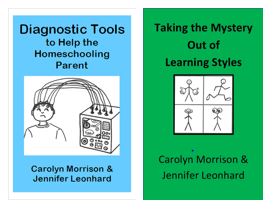It has been my experience that a “good” teacher can present any information to any group of students with success. Why? Because the “good” teacher knows how to reach the audience. When things go wrong, and classes turn “bad,” there are usually a few common elements.
1 — A teacher (whether a parent from the group or a guest speaker) with a condescending attitude toward the students (or toward any other parents who may be present) will ruin the atmosphere of cooperation your group has worked so hard to establish.
2 — The material is too time-consuming. A full-year class (such as geometry), if your class meets only twice a month, will attempt to cover too much information during each class period. Some students may have difficulty keeping up.
3 — Too much (or mandatory) homework may conflict with the student’s regular schedule of classes at home. Again, some students may have difficulty keeping up.
4 — Do not expect all students to be on the same level. Some students may be well experienced in the subject matter, while others may be brand new to the topic, regardless of the age group.
5 — A public school format will be foreign and uncomfortable to homeschoolers who are used to self-directed learning or unschooling methods. (Do not expect all homeschooled children to sit quietly and raise their hands to speak.)
6 — Avoid anything that ridicules or excludes those students who cannot keep up.
7 — Presenting material in a boring manner (such as lecture only) will be less preferable to hands-on, interactive methods.
8 — Too large or too small of an idea will not work well in the time allotted.
9 — Focusing on the wrong age group will keep the class from being effective. Be sure students are not too old or too young for the type of information presented.
10 — Separating students to work independently (by themselves, not in small groups) defeats the purpose of a co-op group class. Individual work can be done at home; the large group provides the benefits of multiple views and perspectives. (In a class such as creative writing, students may do some of their work at home and then bring examples to class to share with the group and discuss their progress.)
Co-op classes should always be considered as supplemental to each family’s home education schedule, unless other arrangements have been made with all participating families prior to the class itself. Consideration for the students’ interests and abilities will turn any homeschool class period into an adventure, whether the class is in your home with a few children or in a large group setting. Opportunities for casual interaction among students will make your co-op class a memorable and enjoyable experience for all.
[For more information on cooperative classes and group activities, visit Topical Index: Co-op Groups.]



 Guilt-Free Homeschooling is the creation of Carolyn Morrison and her daughter, Jennifer Leonhard. After serious disappointments with public school, Carolyn spent the next 11 years homeschooling her two children, from elementary to high school graduation and college admission. Refusing to force new homeschooling families to re-invent the wheel, Carolyn and Jennifer now share their encouragement, support, tips, and tricks, filling their blog with "all the answers we were looking for as a new-to-homeschooling family" and making this website a valuable resource for parents, not just a daily journal. Guilt-Free Homeschooling -- Equipping Parents for Homeschooling Success!
Guilt-Free Homeschooling is the creation of Carolyn Morrison and her daughter, Jennifer Leonhard. After serious disappointments with public school, Carolyn spent the next 11 years homeschooling her two children, from elementary to high school graduation and college admission. Refusing to force new homeschooling families to re-invent the wheel, Carolyn and Jennifer now share their encouragement, support, tips, and tricks, filling their blog with "all the answers we were looking for as a new-to-homeschooling family" and making this website a valuable resource for parents, not just a daily journal. Guilt-Free Homeschooling -- Equipping Parents for Homeschooling Success!

Recent Comments